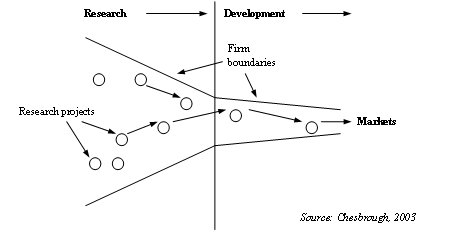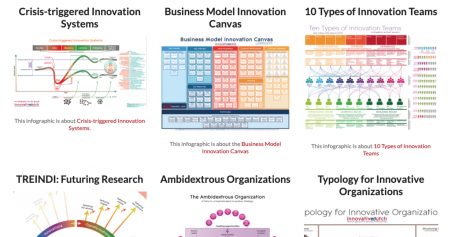This is an overview of some interesting open access papers published in the last two weeks!
Read moreOpen Innovation’s Latest Papers: Wicked Acceleration, Entrepreneurial Ecosystems & More
|
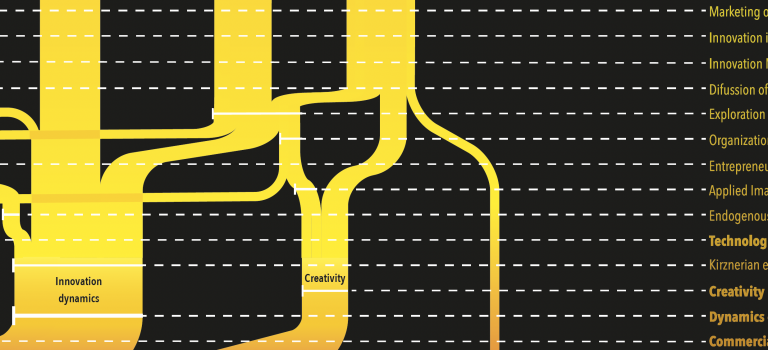
A Visual History of Innovation Theory
The history of innovation theory is as rich as innovation itself. Greek philosophers like Plato and Aristotle already used the term καινοτομία coming from καινός (new) and τομ (radical craftsmanship): crafting in a radically new way. In modern theory, it was Schumpeter who popularized the term innovation in 1934 as part of his line of thinking about business cycles and creative destruction as the basis for (capitalistic) market economies. While he may have based his theory largely on 19th century and early 20th century economists, such as Tarde, Weber and Marx, his work was unique in the way that it combined all of these theories and that he described the important role of the ‘entrepreneur’ in innovation. Different scholars have later addressed the invention of the term ‘entrepreneur’ to Schumpeter.
Read more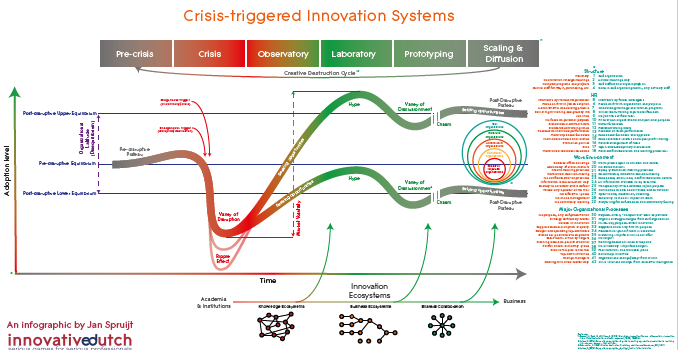
Crisis-triggered Innovation Systems
While the Corona crisis is currently affecting millions worldwide, I wanted to already share with you a fragment of a book I’m currently writing about innovation in the new economy. The fragment is about how a crisis or disruption can create a (spontaneous) need for innovation and could open up opportunities for innovative companies to address new and changed market needs.
Read more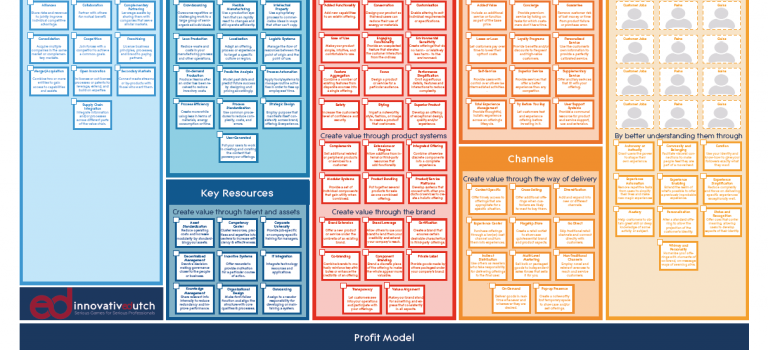
How to blend 10 Types of Innovation with the Business Model Canvas?
Simple but effective: I’ve tried to combine the excellent framework of 10 Types of Innovation (Keeley et al, 2013) with the highly successful framework of the Business Model Canvas (Osterwalder, Pigneur et al, 2008). I wasn’t the first one to come up with this idea, some others have plotted the 10 types on the BMC before, such as Huw Griffiths on Medium or Heather McQuaid on Slideshare.
Read more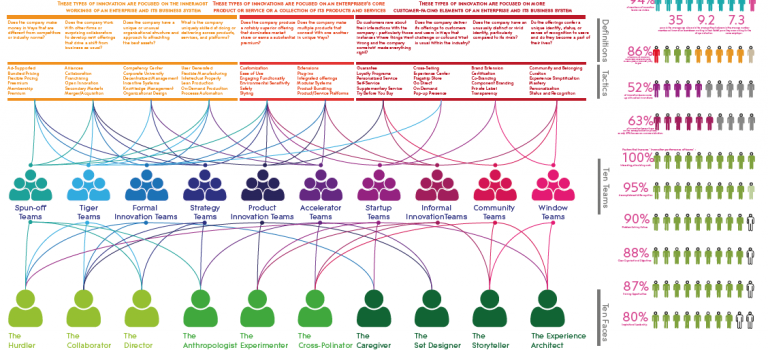
When Ten Faces flirt with Ten Types: Ten Types of Innovation Teams
When the book “Ten Types of Innovation” (Keeley et al.), in its most recent format, hit the shelves in 2013 – not only me, but many of my colleagues in higher education, embraced the work because of its clarity and integrality. It offered a much richer approach than the usual – perhaps more scientifically evidenced – approach of 4 types of innovation (product innovation, process innovation, business model innovation, service innovation). The work was, and still is, one of the most influential works used in our Business Innovation program and highly rewarded by both students and partners in the field. The infographic I made in 2014 based on this book has been one of the most downloaded infographics on this blog ever since.
Read more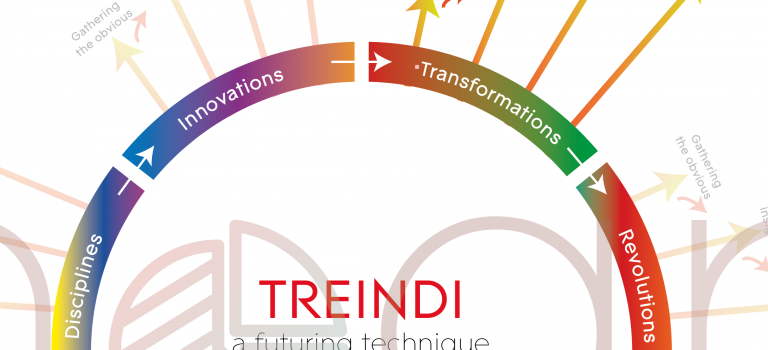
A 4-Step Approach to Creating Exceptional Business Models
a futuring technique for public organizations
Still a holy grail in market research: the DESTEP – STEEPLE – method. It is taught in almost every business-related course in the world and a very powerful tool to map trends for strategic purposes.
However, there are a few fatal flaws that may cause users of this method to miss out on important opportunities:
- It’s too broad to grasp the real pains and gains of customers and clients as well – and as such may result in insights for the whole market rather than insights for your users specifically.
- It’s supposedly a desk research method, missing out on many ‘odd’ opinions and visions that may actually change your market sooner than you think.
- It’s based on ‘old-world-thinking’ by looking into economies, demographics and technologies, rather than shifting paradigms, sociographics and new business models that may or may not be digitally enabled.
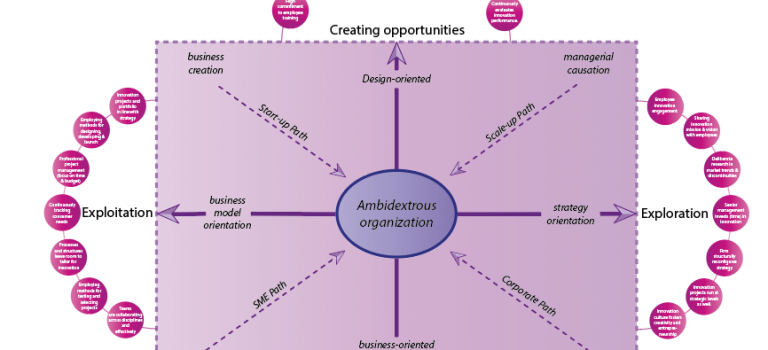
The Ambidextrous Organization
4 Paths to a Sophisticated Innovation Strategy
In december I reached out to both Alexander Osterwalder and John Bessant and asked them what is the most important organizational skill for engaging continuously with innovation. Their answers were almost the same:
- Osterwalder mentioned that every board should consist of both a Chief Executive Office and a Chief Entrepreneurship Officer.
- Bessant noted that organizations should always find a balance between innovators and innovation managers.
Shorty after, I read an article by Ayse Birsel, on Inc.com1. She also talked to asked Alexander Osterwalder and asked him the question why ‘designers who are fluent at business strategy’ and ‘business people who are fluent at design’ are so different to each other. He could easily name 8 differences between the two of them, but the article concluded with the statement that organizations are in need of both explorers and exploiters – or evolutionaries and revolutionaires2.
Read more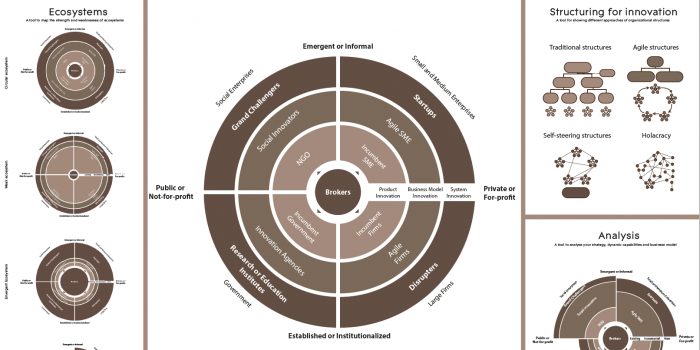
Typology for Innovative Organizations
Typology for Organizations: an update
It has been a while since Henry Mintzberg developed his influential work that made us aware of the importance of structures in organization design. To my opinion, Mintzberg’s work was a refreshing change to the world of organization design that until then has been largely influenced by Taylor’s Scientific Management Approach and Henry Ford’s efficiency-based adaptation of that.
As an entrepreneur and lecturer in organization science I find myself still using Mintzberg-related terminology on a regular base: ‘professional organizations’, ‘top management’, ‘middle management’, ‘hierarchy’ or ‘organization charts’. While these terms may be common language in business and as such might be useful in having a common understanding of what we’re talking about, much of it is outdated: organization design has shifted it’s focus over time. Structures are no longer of primary focus in design organizations. In fact, building blocks as ‘middle management’ might only still exist on paper today. Let me show you how the focus of organization design has changed over the years:
Read more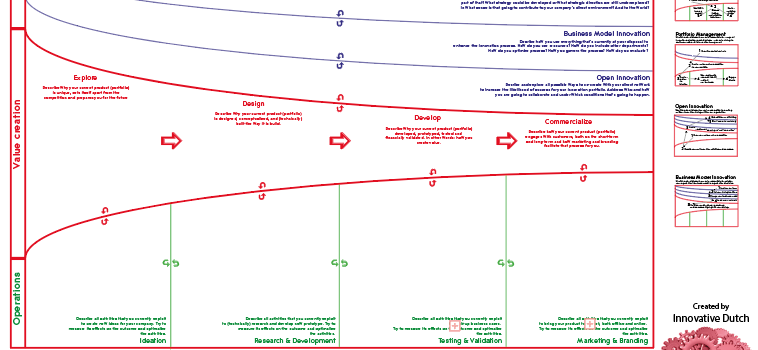
Innovation Management Canvas
As part of a simulation game on innovation management we have been running at universities and in corporate training programs for over 4 years now, we have developed an integrative model for dealing with innovation management on a daily basis. Innovation Management is a strategic activity that isn’t necessarily needed to implement throughly for every company. Mostly large companies have included structured processes that include administrative stages to following the (large number of) project that are in progress and to be able to follow-up on them and calculate the effect of innovation management in general. For smaller companies however, that is not general practice: having such a formal process in place simply doesn’t weigh up to cost efficiencies will generate. But for them, innovation management is just as important – but they rather use a toolkit than a formal process. Based on our 8 Types of Innovation Processes model this is a useful canvas design that makes it easy to start working on formalizing your innovation activities and processes in your organization.
Read more